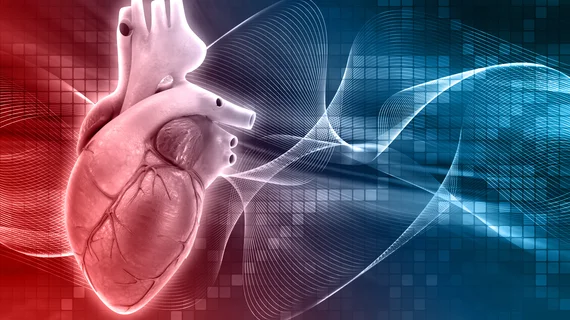Ultrasound-based imaging tool to pinpoint arrhythmia ‘win-win’ for patients, physicians
A team of Columbia University engineers has harnessed the power of a proven ultrasound technique to overcome long-standing hurdles in diagnosing heart arrhythmias, according to new research.
Electromechanical wave imaging is a portable, high-frame-rate US method that identifies irregular heartbeats via three-dimensional cardiac maps. And when put to the test in more than 50 patients, EWI located 96% of arrhythmia conditions compared to the current standard, the New York-based researchers reported March 25 in Science Translational Medicine.
"This study presents a significant advancement in addressing a major unmet clinical need: the accurate arrhythmia localization in patients with a variety of heart rhythm disorders," said Natalia Trayanova, PhD, a professor of biomedical engineering and medicine at Johns Hopkins University, who wasn’t involved in the study.
The 12-lead electrocardiogram is still considered the noninvasive gold standard for diagnosing and pinpointing these irregular heartbeat conditions. Clinicians said, however, that it lacks accuracy, and its inability to generate a visual tool for spotting the condition can result in varying diagnoses.
With this in mind, the team organized a double-blinded clinical study assessing the diagnostic accuracy of EWI for identifying and pinpointing the location of atrial and ventricular arrhythmias. They evaluated 55 patients with preexisting heart disease, which included those with prior catheter ablations or other cardio comorbidities. Each individual received an EWI scan before their ablation procedure and the researchers retrospectively compared the imaging-generated 3D maps with expertly produced ECG assessments.
Elisa Konofagou, with Columbia’s Department of Radiology, reported that EWI located 96% of arrhythmias compared to 71% when using electrocardiogram.
Although the team proved their ultrasound-based technique was more accurate than ECG, the real gains for clinicians and patients lie in a combination of the two, said co-first author Lea Melki, a PhD student in the department of biomedical engineering at Columbia.
"It's really clear now that, when used in conjunction with standard 12-lead ECG, EWI can be a valuable tool for diagnosis, clinical decision making and treatment planning of patients with arrhythmias," Melki said in a statement. "We believe our EWI technique, with minimal training, will result in higher accuracy in the site of ablation, a faster procedure, and fewer complications and repeat visits after the procedure. This is a win-win for everyone, both patients and clinicians."

